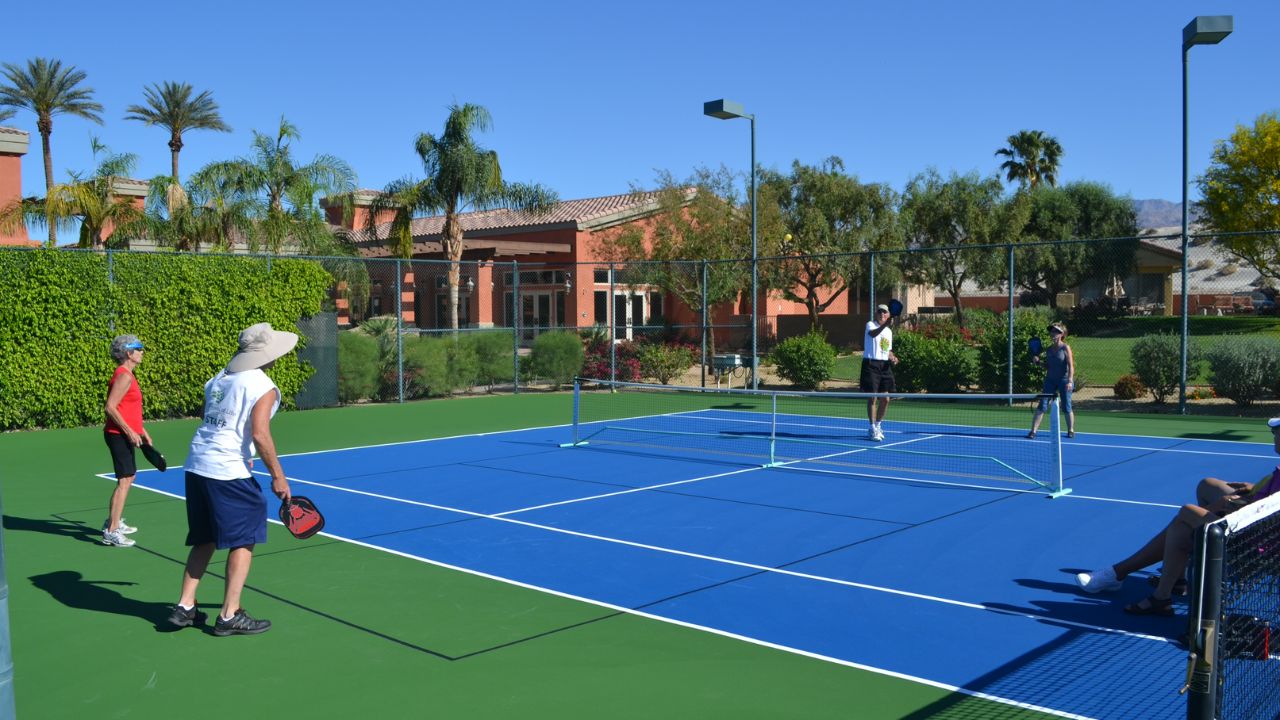A professional pickleball court requires the selection of a suitable playing surface which delivers optimal gameplay alongside secure conditions and extended service life. A suitable court surface delivers reliable ball bounce while offering sufficient grip and showing resistance to different weather patterns. Multiple surface choices demand thorough evaluation to reach an informed selection. The following guidelines will help you choose the most suitable professional picleball court surfaces.
Consider the Playing Experience
The surface of a professional pickleball court needs to deliver consistent performance for players. The surface needs to enable players to move laterally fast while bouncing balls consistently while maintaining player safety. A competitive playing surface should have a smooth texture which allows players to maintain grip while also enabling sliding movements. The selected material needs to support players of all abilities from novice to expert so they can experience a smooth playing environment.
Prioritise Durability and Longevity
Selecting superior court materials results in extended performance alongside minimal upkeep requirements. Professional pickleball courts face extensive foot traffic combined with numerous ball impacts that eventually result in surface degradation. The surface material stands up against cracking and warping while resisting fading through all weather changes to preserve its structural foundation. Acrylic coatings together with modular court tiles and cushioned surfaces create durable court surfaces that need little maintenance.
Ensure Proper Traction and Grip
The surface of an excellent pickleball court needs to achieve equilibrium between surface grip and avoidance of slips. High traction creates movement obstacles and enhances injury risks, while slippery surfaces lead to accidental falls. Professional-grade court surfaces implement textured finishes combined with non-slip coatings, which provide stability and support during gameplay while maintaining smooth foot transitions. Different material tests help identify the proper traction level for the best playing conditions.
Evaluate Ball Bounce and Speed
Surface materials determine both the speed and bounce behavior of the ball. A professional pickleball court needs to generate uniform ball bounces which enable players to predict their opponents' shots properly. The game speed in pickleball depends on the court surface material because a hard surface made of acrylic or concrete with specific coatings speeds up ball movement, whereas surfaces with modular tiles or cushioning slow down the ball's speed. The court material selection depends on whether players use the court for casual games or competitive tournaments.
Assess Weather Resistance and Climate Adaptability
Pickleball courts located outside need to endure different climate conditions that include both hot temperatures and rainy periods and high humidity. Acrylic-coated concrete surfaces work in all climates yet need extra maintenance to stop cracking. Modular tile surfaces represent a viable alternative because they adjust their size according to temperature variations, thus minimising damage. The analysis of local climate conditions enables users to select the most appropriate surface material to combat deterioration while ensuring court usability throughout the year.
Factor in Maintenance and Cleaning Requirements
Pickleball court surfaces need some form of maintenance, yet selecting low-maintenance options cuts down both operational expenses and maintenance work. Acrylic-coated courts require occasional resurfacing, but modular tile courts can be cleaned using basic washing procedures. A court surface which resists debris accumulation, mold growth, and fading will stay pristine without needing much maintenance intervention. The assessment of necessary maintenance requirements during the selection process allows users to identify affordable and manageable solutions.
Look for Customization and Design Options
A professional pickleball court needs to excel in performance while allowing players to personalise its appearance through branding features. The majority of court surfaces permit players to customise their appearance by adding color schemes, logos, and line markings. The acrylic-based courts enable multiple color choices through painting and modular tile systems let users change designs through temporary modifications. A surface with customisation features improves both the visual appeal and recognition of the court.
Consider Indoor vs. Outdoor Court Requirements
Surface selection follows different criteria between courts built inside versus outside. The flooring materials used in indoor courts consist of wood and synthetic surfaces, which deliver superior traction and perfect bounce characteristics. Outdoor courts need weather-proof materials such as acrylic-coated concrete or interlocking tiles since they must endure outside conditions. The court's intended use determines which surface will best fulfill the playing requirements of that environment.
Work with Trusted Manufacturers and Installers
Both manufacturing expertise and installation quality determine the final quality of pickleball court surfaces. The use of a professional sports flooring specialist company ensures the construction of a court that fulfills industry requirements. The court will deliver optimal performance for multiple years because trusted manufacturers use premium materials with warranties and installation assistance.
Conclusion
The selection of optimal professional pickleball court surfaces demands a thorough evaluation of durability alongside traction, ball bounce, and climate compatibility. A surface selection that matches the playing needs improves game quality and simultaneously decreases maintenance requirements and long-term financial responsibility. A high-quality court purchase provides safety features and comfort alongside superior performance levels for competitive tournaments and recreational games. Organisations, along with individuals who follow these important guidelines, can build professional-level pickleball courts.


